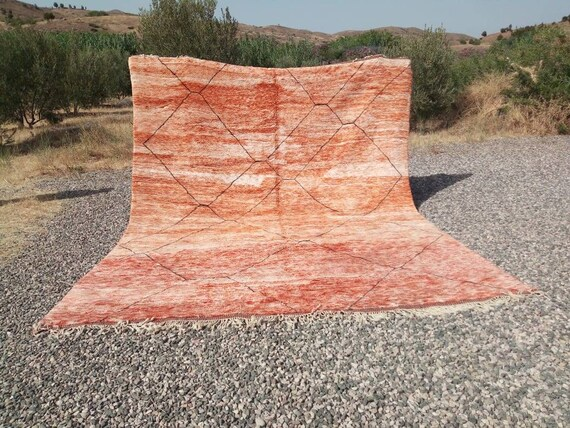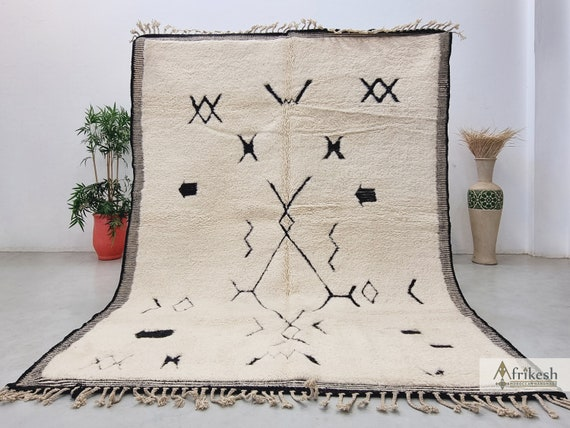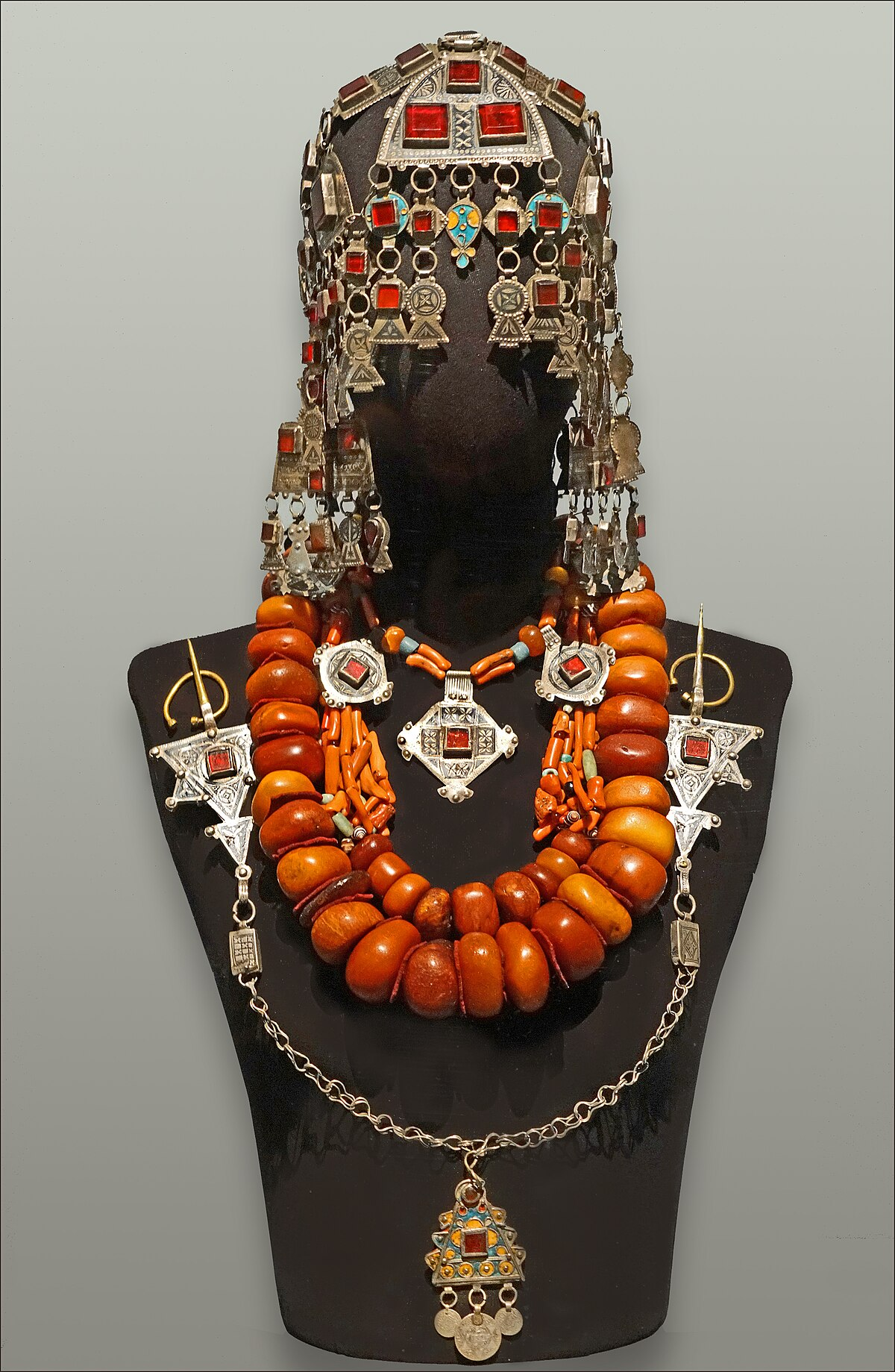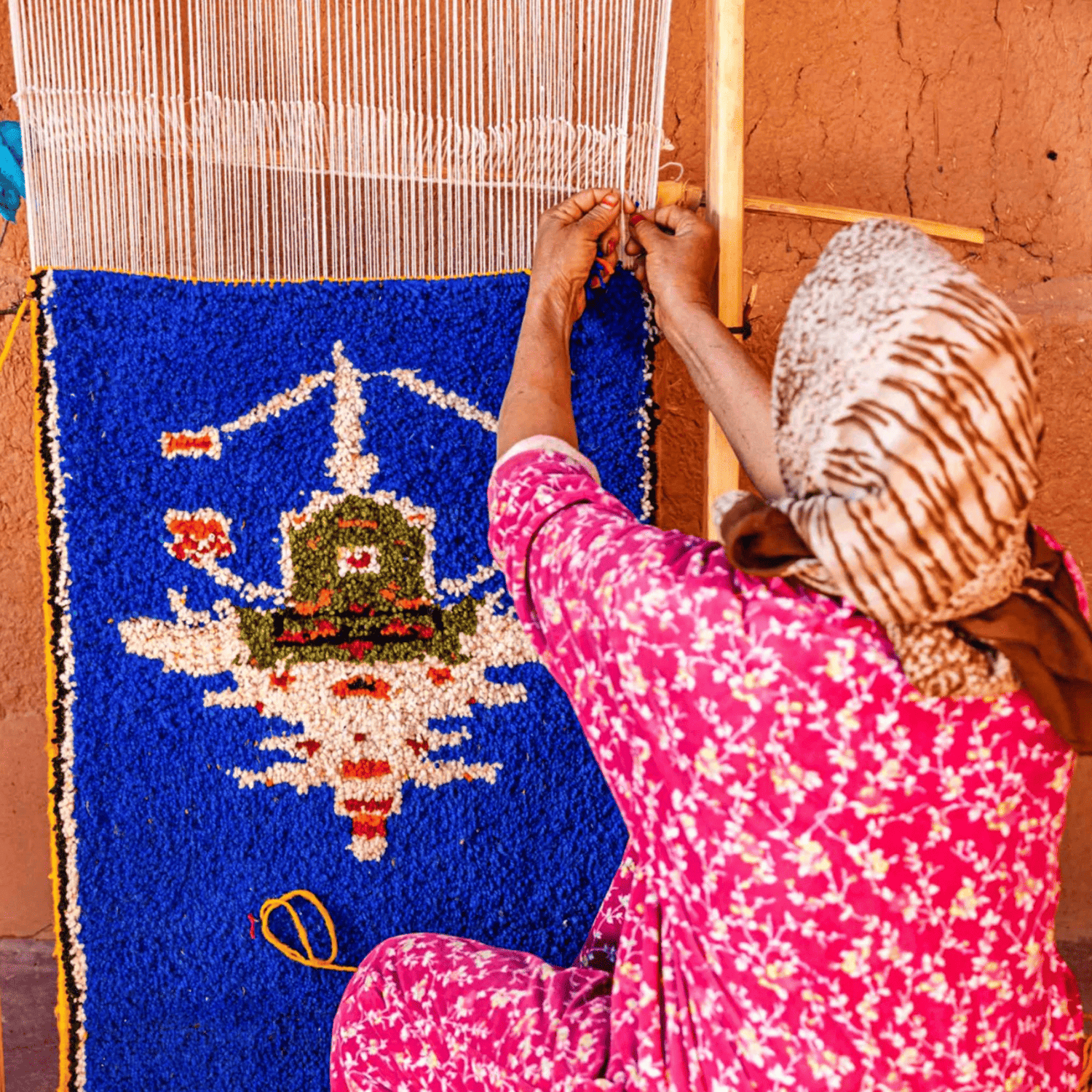- Published on
Unraveling the Secret Language of Moroccan Carpet Symbols in Atlas Mountains
- Authors

- Name
- Adil ABBADI
Introduction

Tucked away in the rugged Atlas Mountains of Morocco, a hidden language has been woven into the fabric of tradition. For centuries, Berber artisans have been creating exquisite carpets that not only adorn homes but also whisper secrets of their ancestors. These intricate symbols, passed down through generations, hold the keys to understanding the rich cultural heritage of the Atlas Mountains. In this article, we'll embark on a journey to unravel the mystique of Moroccan carpet symbols, and discover the stories they tell.
- The Berber Legacy
- Symbolism and Meaning
- The Art of Weaving
- Preserving the Tradition
- Conclusion
- Cultural Call-to-Action
The Berber Legacy
The Berber people, indigenous to North Africa, have a long history of weaving carpets that date back to the 7th century. These masterpieces were not only a testament to their skill but also a means of communication, preserving their history, myths, and legends. The Atlas Mountains, stretching across Morocco, Algeria, and Tunisia, have been the cradle of Berber culture, where their unique language, Tamazight, and traditions have thrived.
Symbolism and Meaning
Moroccan carpets are a tapestry of symbols, each carrying a specific meaning and significance. These symbols can be categorized into three main groups: geometric, figurative, and abstract.
Geometric Symbols

Geometric symbols, such as the benadil (eight-pointed star) and the zellij (geometric mosaic), represent the harmony between nature and human existence. The benadil symbolizes the connection between the physical and spiritual worlds, while the zellij pattern embodies the beauty of creation.
Figurative Symbols

Figurative symbols, featuring animals, plants, and humans, tell stories of everyday life, myths, and legends. The snake, for instance, represents fertility and rebirth, while the gazelle symbolizes swiftness and agility.
Abstract Symbols

Abstract symbols, often used in combination with geometric and figurative symbols, convey emotions, energy, and spiritual connections. The chevron pattern, for example, represents the flow of life and the balance between masculine and feminine energies.
The Art of Weaving
Berber artisans spend years perfecting their craft, passing down techniques and secrets from generation to generation. The weaving process is a labor of love, requiring patience, dedication, and attention to detail.

The traditional weaving process involves:
- Preparing the wool: Berber women collect and clean the wool, often using natural dyes to create a vibrant color palette.
- Warping: The warp threads are stretched on a loom, providing the foundation for the carpet.
- Weaving: The artisan weaves the wool yarns, incorporating symbols and patterns, slowly bringing the design to life.
- Finishing: The carpet is completed with a border, often featuring a specific symbol or message.
Preserving the Tradition
As the world becomes increasingly digital, the art of traditional carpet weaving is at risk of being lost. Efforts are being made to preserve and promote this ancient craft, ensuring its continuation for future generations.
Education and Training
Initiatives such as the Moroccan Ministry of Culture's "Preservation of Traditional Crafts" program provide training and education for young Berber artisans, equipping them with the skills to carry on this cultural heritage.
Cooperatives and Fair Trade
Cooperatives and fair trade organizations, like the Atlas Women's Cooperative, support Berber artisans, providing them with a platform to showcase their work and ensuring fair compensation for their labor.
Conclusion
The secret language of Moroccan carpet symbols is a testament to the rich cultural heritage of the Atlas Mountains. These intricate symbols, woven with love and care, hold the stories of the Berber people, their history, and their traditions. As we delve deeper into the mystique of these carpets, we are reminded of the importance of preserving our cultural heritage and promoting the continuation of traditional crafts.
Cultural Call-to-Action
As we appreciate the beauty and significance of Moroccan carpet symbols, let us also acknowledge the importance of supporting Berber artisans and their communities. By doing so, we ensure the continuation of this ancient craft and the preservation of the Atlas Mountains' cultural legacy.
Discover the magic of Moroccan carpets, and unravel the secrets of the Atlas Mountains.
